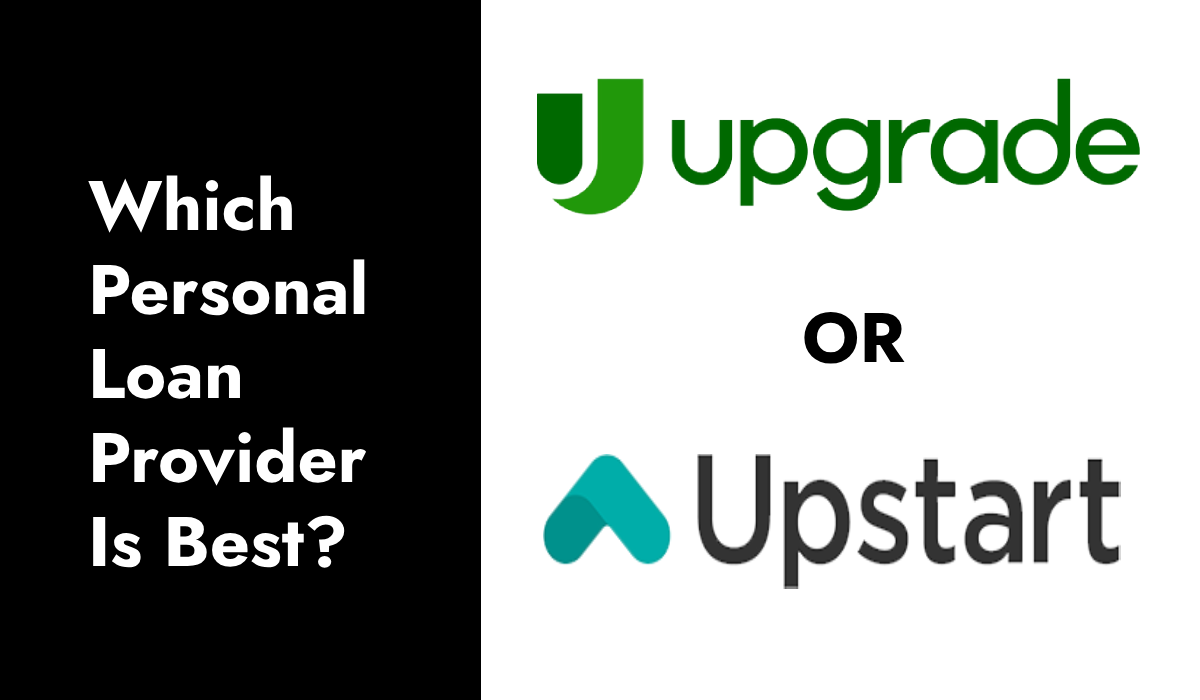If you want a personal loan from an online lender with flexible borrower conditions, Upstart and Upgrade are two alternatives. Both lenders provide speedy funding and no prepayment penalties, but the terms and fees may make one a better option.
How do Upgrade Personal Loans Work?
Upgrade costs range from $1,000 to $50,000. Before submitting an application with Upgrade, you can prequalify to know what interest rates and terms you may be offered without affecting your credit.
After prequalification, you must submit an application for a loan evaluation. If you are authorized, Upgrade will make numerous loan offers, including different loan terms and rates.
After prequalification, you must submit an application to be evaluated for a loan. If you are authorized, Upgrade will make numerous loan offers, including different loan terms and rates.
Once you’ve accepted the best loan offer for you, you’ll sign the loan contract, get your money, and begin making monthly payments. Loans from Upgrade can be disbursed within one day of approval.
Best personal loan

- Est. APR = 6.99%
- Loan type : Personal
- Loan amount: $1k - $50k
- Min credit score: 580
4.3
editorial team. We score based on factors
that are helpful for consumers, such as
how it affects credit scores, the rates and
fees charged, the customer experience,
and responsible lending practices.
Best personal loan for bad credit
- Est. APR = 6.99-35.99%
- Loan Amount = $100-$40K
- Min Credit Score = 300
4.8
editorial team. We score based on factors
that are helpful for consumers, such as
how it affects credit scores, the rates and
fees charged, the customer experience,
and responsible lending practices.
Best personal loan for bad credit

- Est. APR = 9.99 - 39.99%
- Loan Amount = $1k - $50k
- Min Credit Score = 580
4.8
editorial team. We score based on factors
that are helpful for consumers, such as
how it affects credit scores, the rates and
fees charged, the customer experience,
and responsible lending practices.
Best Personal Loan for No Credit

- Est. APR 7.80% - 35.99%
- Loan amount $1k– $50k
- Min credit score 300
4
editorial team. We score based on factors
that are helpful for consumers, such as
how it affects credit scores, the rates and
fees charged, the customer experience,
and responsible lending practices.

- Est. APR 5.99% to 35.99%
- Loan amount $500 to $5,000
- Min credit score = Any
3.7
editorial team. We score based on factors
that are helpful for consumers, such as
how it affects credit scores, the rates and
fees charged, the customer experience,
and responsible lending practices.
- Est. APR 5.99%-35.99%
- Loan amount $1Kto $35K
- Min credit score = 580
4.4
editorial team. We score based on factors
that are helpful for consumers, such as
how it affects credit scores, the rates and
fees charged, the customer experience,
and responsible lending practices.
- Flexible loan amounts
- 24/7 Support
- No prepayment fees
4
editorial team. We score based on factors
that are helpful for consumers, such as
how it affects credit scores, the rates and
fees charged, the customer experience,
and responsible lending practices.
Upgrade Personal Loans: Pros and Cons
Upgrade provides loans with short response times however they may be pricey for clients with weak credit.
Pros
- Quick funding turnaround: Upgrade can fund your loan within one day of application.
- Long loan terms: Upgrade’s loan durations range from two to seven years, allowing for more flexible monthly payment alternatives.
- There is no prepayment penalty. If you repay your loan early, there is no prepayment penalty.
Cons
- High maximum annual percentage rate (APR): Upgrade’s APR ranges from 8.49% to 35.99%. If you have bad credit, the charges can be similar to credit card APRs.
- Origination fee: Upgrade charges an origination fee between 1.85% and 9.99%, which is taken from the loan profits.
- Loans demand collateral: Upgrade provides secured loans backed by a car. Although these loans are easier to qualify for, borrowers risk losing control of their vehicle if they default.
Related: Best Personal Loan Providers for Freelancers in 2024
How Upstart Personal Loans Work?
Upstart personal loans vary from $1,000 to $50,000 and can be funded as quickly as one business day. The lender provides loan prequalification, which allows you to view your rates and approval without affecting your credit.
Upstart’s credit standards differ from those of most other lenders. Upstart does not need applicants to have a long enough credit history to obtain a credit score, and it accepts borrowers with ratings as low as 300.
Instead, Upstart mandates that borrowers have a debt-to-income ratio (DTI) of 45% or 50% have not filed for bankruptcy in the last 12 months, and have no delinquent accounts, among other criteria.
After prequalification, you must submit an application to be evaluated for a loan. If accepted, you have the option of accepting or declining the loan offer.
Once your loan has been funded, you will make monthly or bimonthly repayments.
Upstart Personal Loans: Pros and Cons
Upstart provides speedy funding and will consider candidates beyond their credit scores, however a high maximum APR and costs might make the loan significantly more expensive.
Pros of Upstart Personal Loans
- Quick funding turnaround: You can receive loan funds the day after accepting the loan.
- No Credit History: Upstart has no minimum credit requirements and takes into account factors like education and work while reviewing applications.
- There is no prepayment penalty. Upstart does not charge a fee for returning your loan early.
Cons of Upstart Personal Loans
- A high maximum annual percentage rate. The APR on Upstart loans can exceed 35.99%, making it one of the highest among personal loan lenders.
- There are limited-term alternatives. Upstart only provides loan terms of three or five years, which limits your repayment alternatives.
Origination fees are associated with upstart loans, which may include costs for origination, late payment, check refund, and repossession.
Related: How to Get a Personal Loan With Bad Credit
Upgrade vs. Startup: Which Should You Choose?
Upgrade and Upstart are equivalent choices, including loan limitations, quick funding turnarounds, origination fees, and the absence of repayment fees.
Upstart may be a better alternative for borrowers with little or no credit because of its flexible borrower standards and an application procedure that takes into account factors other than credit. Upstart also allows borrowers to set up automatic biweekly installments, making it easy to make extra payments every month.
Upgrade, on the other hand, is better suited for borrowers seeking additional repayment options. Upgrade offers repayment terms of up to seven years, whilst Upstart’s terms are only five years.
Because both lenders provide personal loan prequalification, you should evaluate their rates and terms to determine which is best for you.
Best personal loan

- Est. APR = 6.99%
- Loan type : Personal
- Loan amount: $1k - $50k
- Min credit score: 580
4.3
editorial team. We score based on factors
that are helpful for consumers, such as
how it affects credit scores, the rates and
fees charged, the customer experience,
and responsible lending practices.
Best personal loan for bad credit
- Est. APR = 6.99-35.99%
- Loan Amount = $100-$40K
- Min Credit Score = 300
4.8
editorial team. We score based on factors
that are helpful for consumers, such as
how it affects credit scores, the rates and
fees charged, the customer experience,
and responsible lending practices.
Best personal loan for bad credit

- Est. APR = 9.99 - 39.99%
- Loan Amount = $1k - $50k
- Min Credit Score = 580
4.8
editorial team. We score based on factors
that are helpful for consumers, such as
how it affects credit scores, the rates and
fees charged, the customer experience,
and responsible lending practices.
Best Personal Loan for No Credit

- Est. APR 7.80% - 35.99%
- Loan amount $1k– $50k
- Min credit score 300
4
editorial team. We score based on factors
that are helpful for consumers, such as
how it affects credit scores, the rates and
fees charged, the customer experience,
and responsible lending practices.

- Est. APR 5.99% to 35.99%
- Loan amount $500 to $5,000
- Min credit score = Any
3.7
editorial team. We score based on factors
that are helpful for consumers, such as
how it affects credit scores, the rates and
fees charged, the customer experience,
and responsible lending practices.
- Est. APR 5.99%-35.99%
- Loan amount $1Kto $35K
- Min credit score = 580
4.4
editorial team. We score based on factors
that are helpful for consumers, such as
how it affects credit scores, the rates and
fees charged, the customer experience,
and responsible lending practices.
- Flexible loan amounts
- 24/7 Support
- No prepayment fees
4
editorial team. We score based on factors
that are helpful for consumers, such as
how it affects credit scores, the rates and
fees charged, the customer experience,
and responsible lending practices.


 Read More
Read More 




